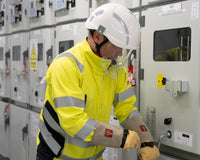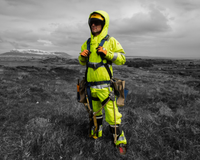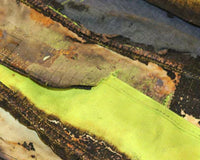NFPA 70, also known as the National Electrical Code (NEC), is an extensive set of safety standards for electrical wiring and installation in the United States. Enforced in all 50 states, this standard aims to prevent electrical hazards such as fires and electric shocks.
The NFPA 70 standard
NFPA 70 is a National Fire Protection Association (NFPA) standard for the United States. NFPA 70 is also known as the National Electrical Code (NEC). This standard is the benchmark for safe electrical design, installation, and inspection to protect people and property from electrical hazards. NFPA 70 is enforced in all 50 states of the US.
NFPA 70: 2023 edition
The latest edition of NFPA 70 was published in 2023, replacing the previous 2020 National Electrical Code standard. This standard is regularly updated, ensuring it conforms to the latest safety practices and technological advancements.
The next edition of NFPA 70 is due to be published in 2026, with an annual NEC revision cycle taking place in 2025.
NFPA 70 requirements
The NFPA 70 standard specifies general requirements for electrical installations. This is an comprehensive safety standard designed to ensure safe electrical installations and prevent electrical hazards such as fires and electric shocks.
The NEC covers a wide range of topics including:
- Wiring and protection
- Wiring methods and materials
- Equipment for general use
- Special occupancies
- Special equipment
- Special conditions
- Communications systems
NEC - Wiring and protection
This chapter of NEC focuses on the requirements for proper wiring and the protection of electrical systems. This chapter includes guidelines on the use and identification of grounded conductors, various circuits and feeders, overcurrent and overvoltage protection, and grounding and bonding.
NEC - Wiring methods and materials
This chapter of NEC specifies the materials and methods that are approved for electrical wiring. It covers the general requirements for wiring methods and materials before providing more specific guidance on the approved methods and materials.
This chapter covers the use of different types of conductors, insulation types, and methods for installing wiring in various settings to ensure the wiring is done safely and is durable enough to withstand environmental conditions and use over time.
NEC - Equipment for general use
This chapter of NEC addresses the installation and use of general electrical equipment that has been approved by the National Electrical Code. It covers a wide range of equipment including outlets, switches, appliances, generators, transformers, and other equipment commonly used for electrical installations.
NEC - Special occupancies
This chapter of NEC provides specific guidelines for electrical installations for occupancies and buildings that have unique requirements, ensuring the most appropriate electrical installation guidelines are followed for the environment.
Some special occupancies outlined in this chapter include hazardous (classified) locations, intrinsically safe systems, health care facilities, aircraft hangars, and park trailers. This is an extensive chapter covering a wide variety of locations where additional safety measures may be required.
NEC - Special equipment
This chapter of NEC covers the installation and safety requirements for special electrical equipment where additional safety measures may need to be considered. It covers a wide range of equipment including, but not limited to, office furnishings, industrial machinery, natural and artificially made bodies of water, and fire pumps. These special equipment guidelines ensure the equipment is installed and used safely.
NEC - Special conditions
This chapter of NEC outlines unique conditions that may affect electrical installations. In this chapter, you will find requirements for conditions that require special rules such as emergency systems, energy storage systems, fire alarm systems, and optical fibre cables.
NEC - Communications systems
This chapter of NEC provides guidelines for the installation of communications systems. As well as outlining general requirements for communications systems, this chapter also details specific requirements for communication systems such as antenna systems, network-powered broadband communications systems, and community antenna television and radio distribution systems.


































